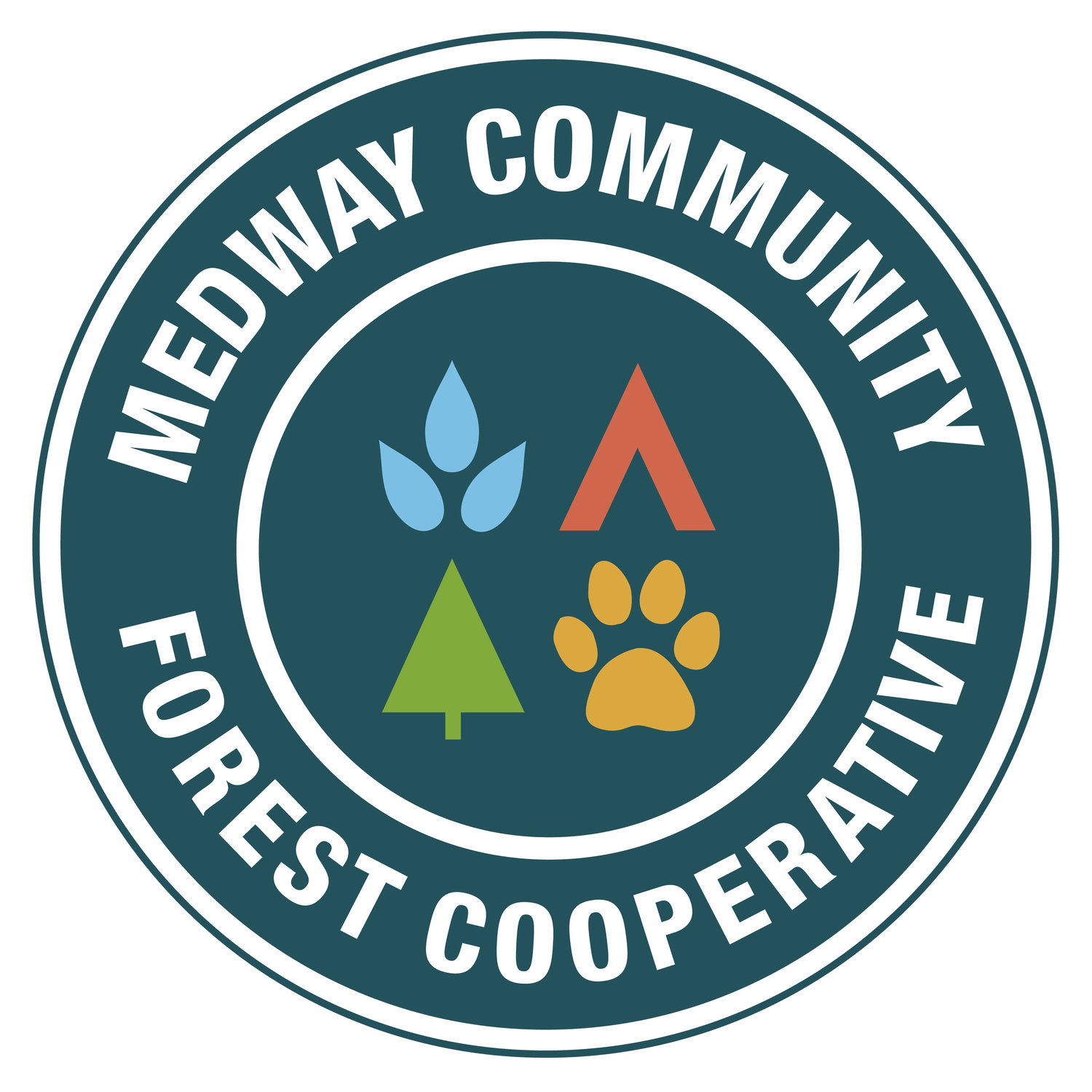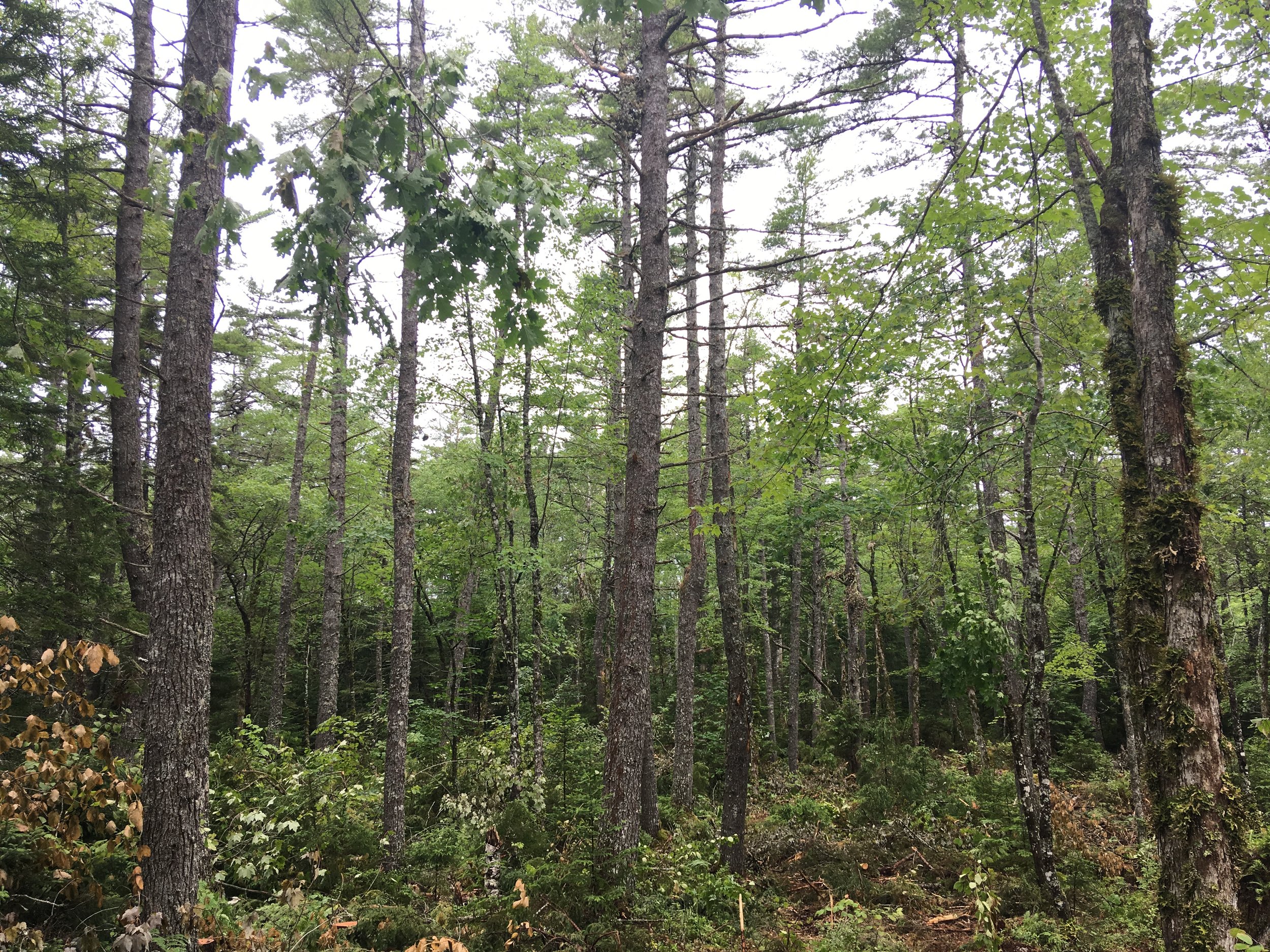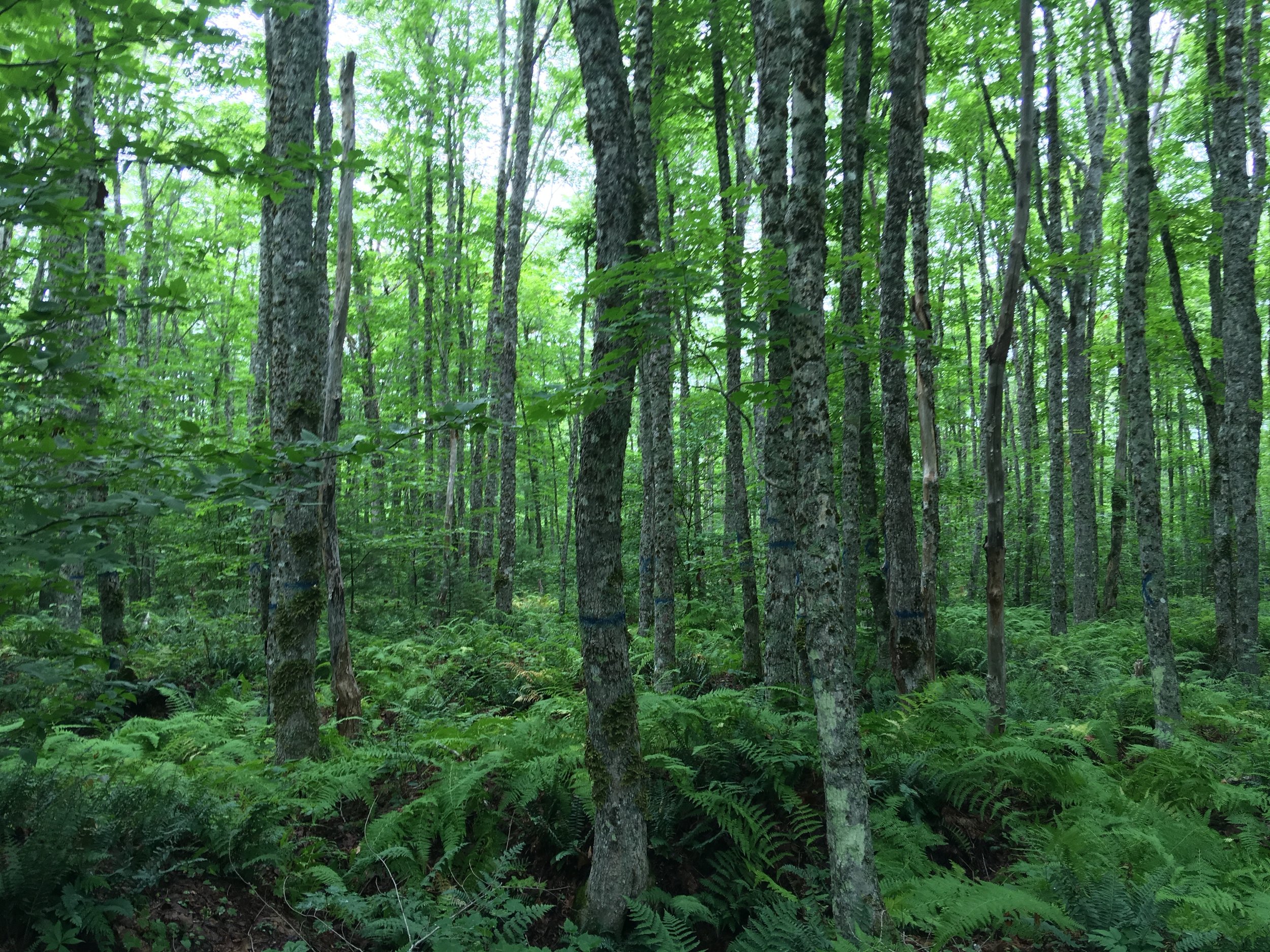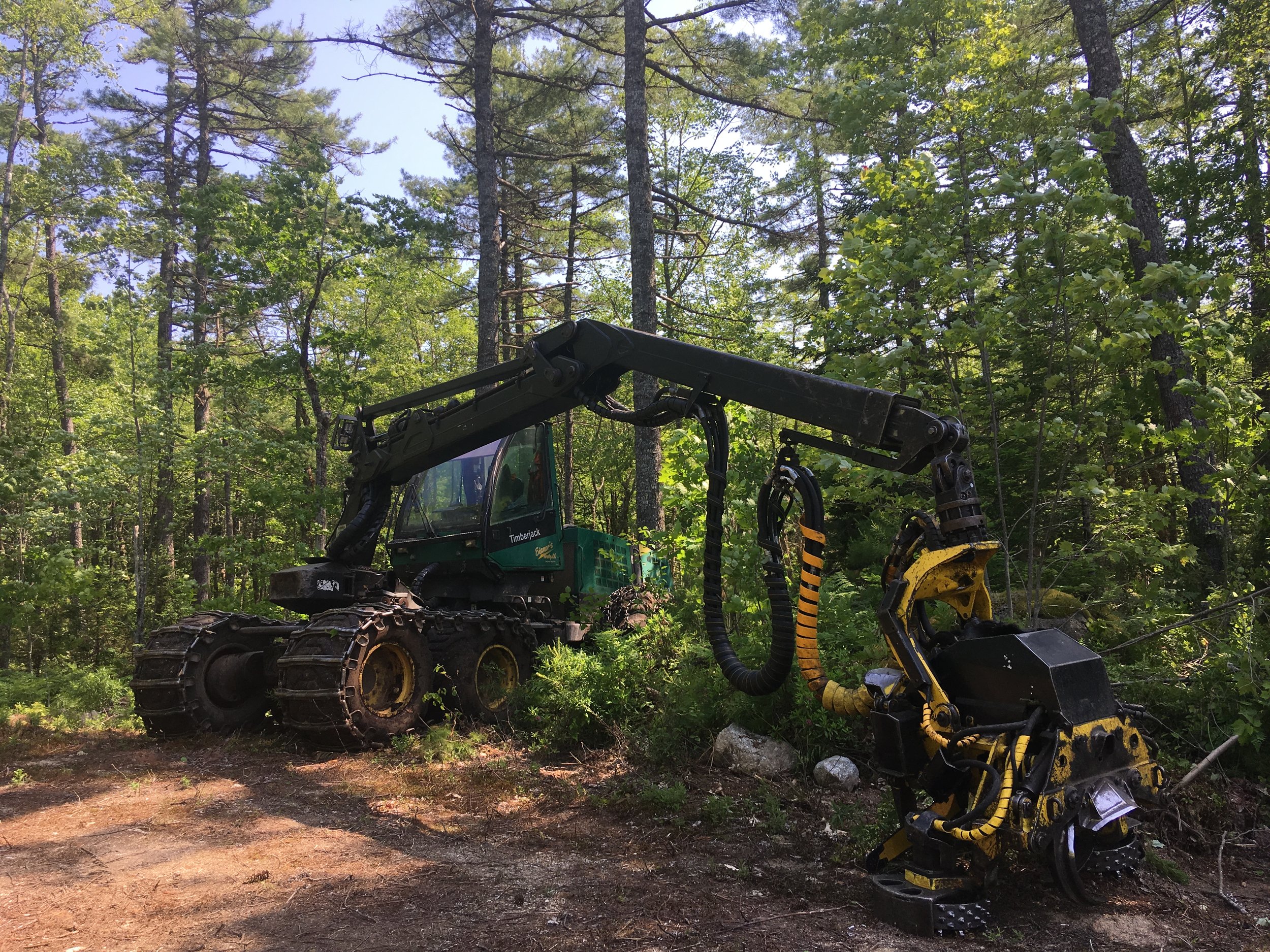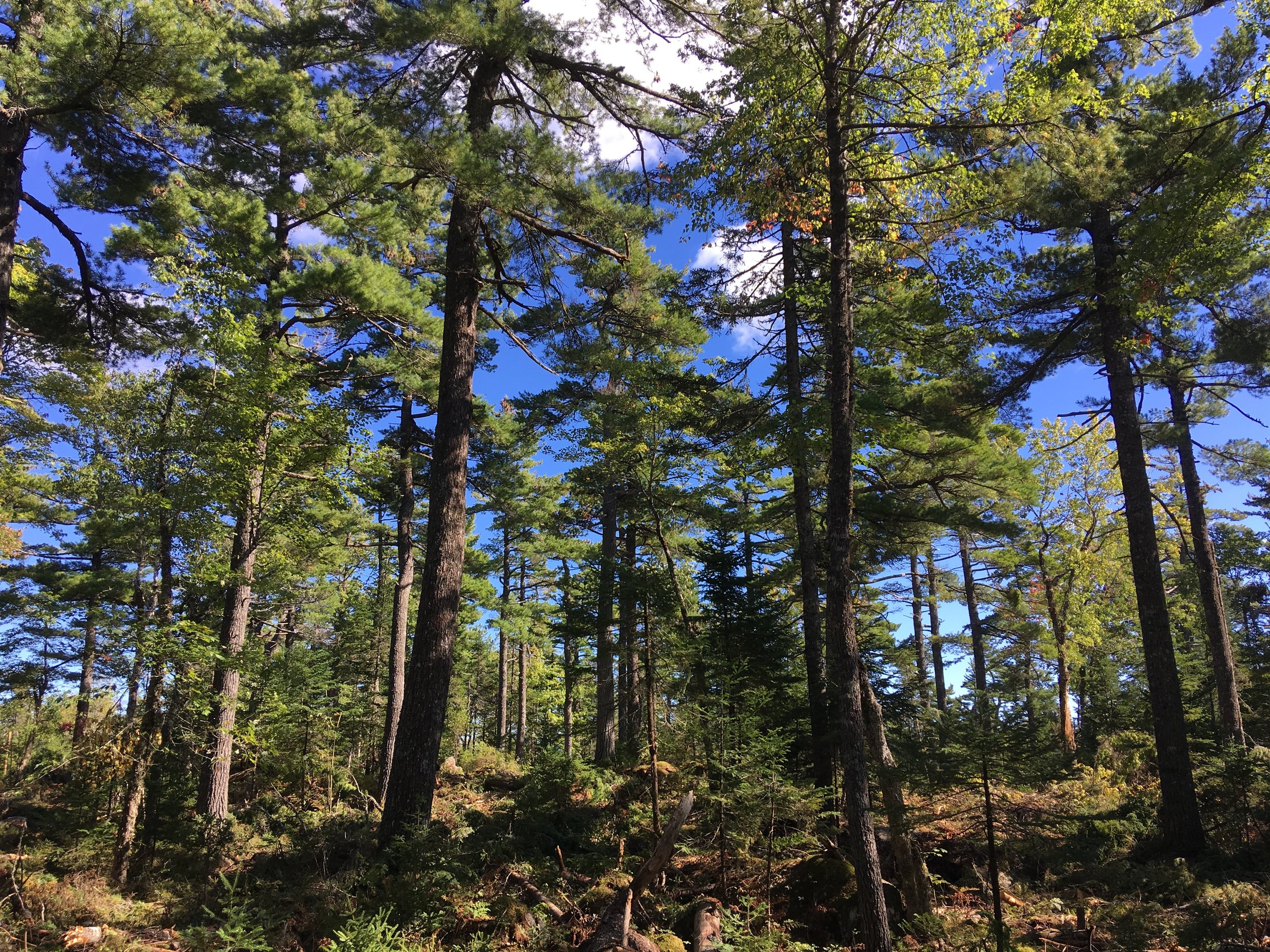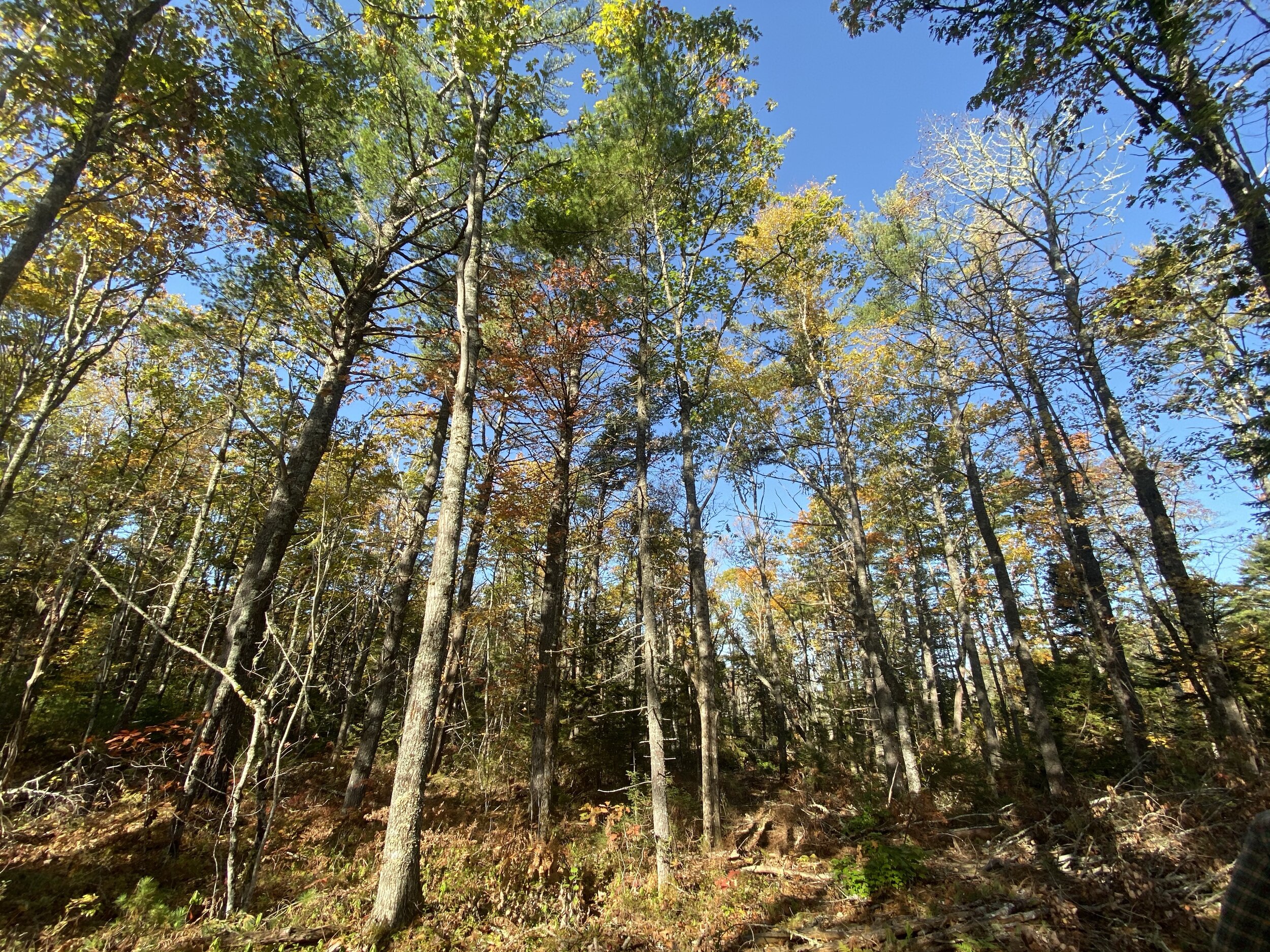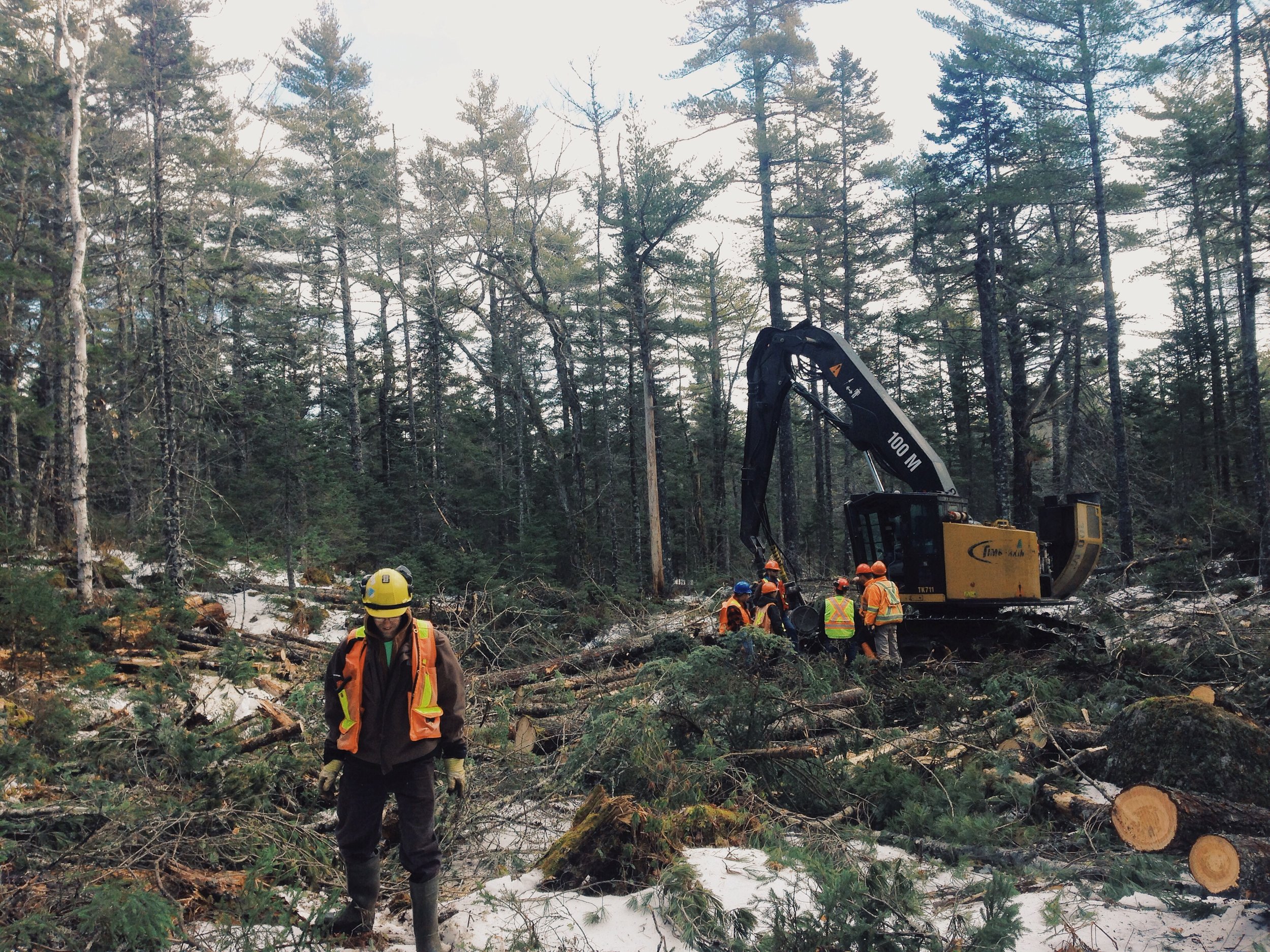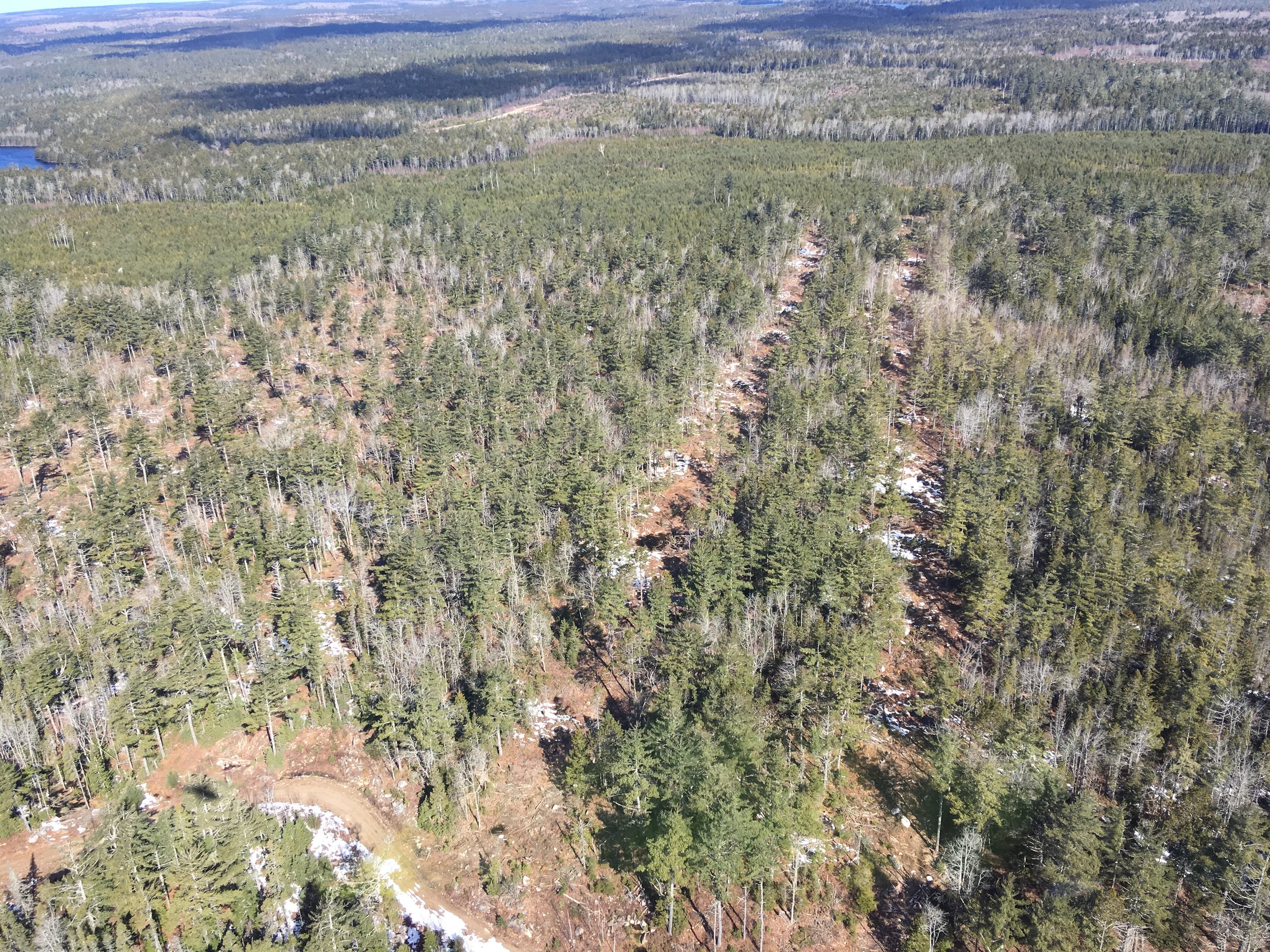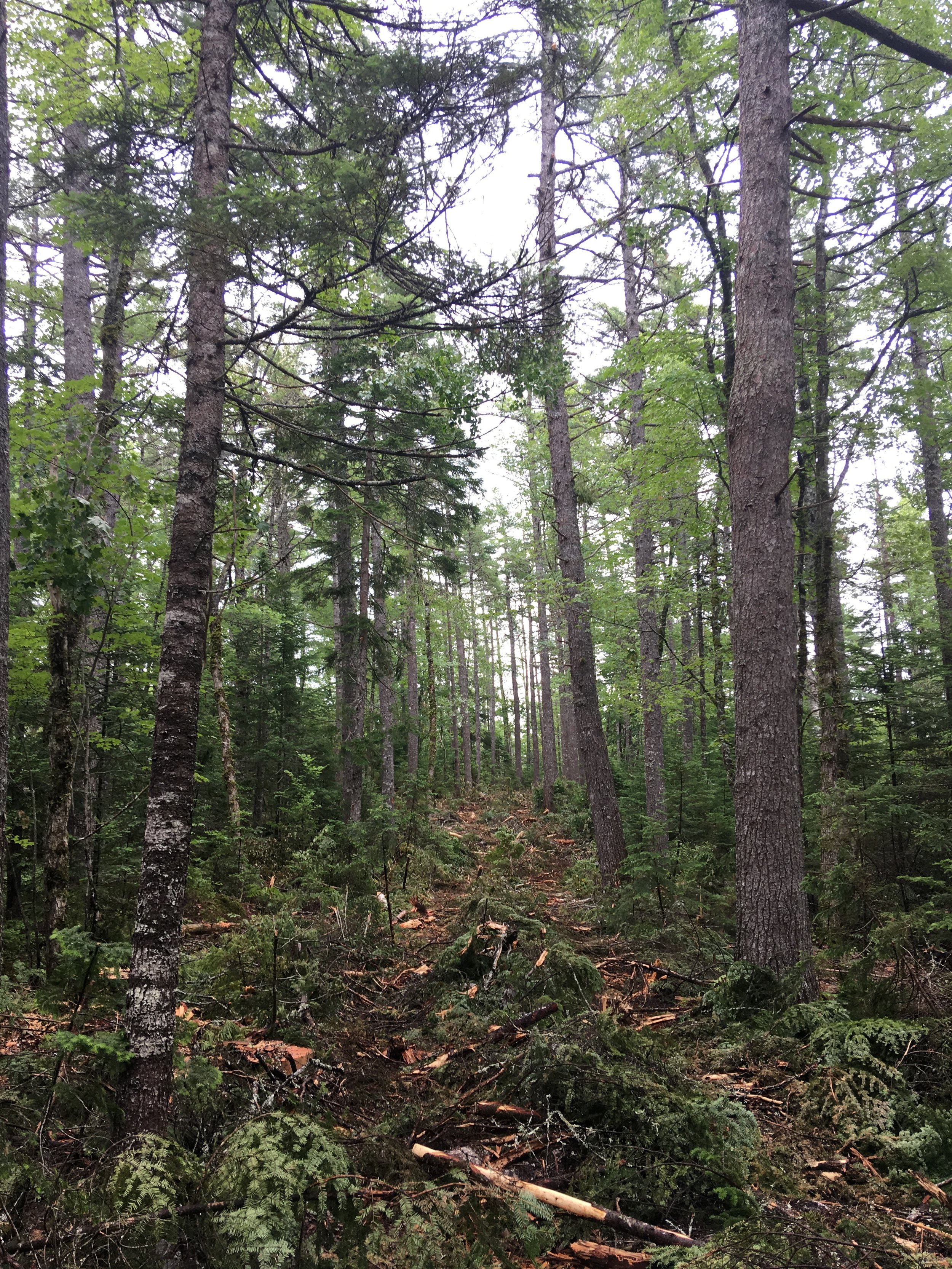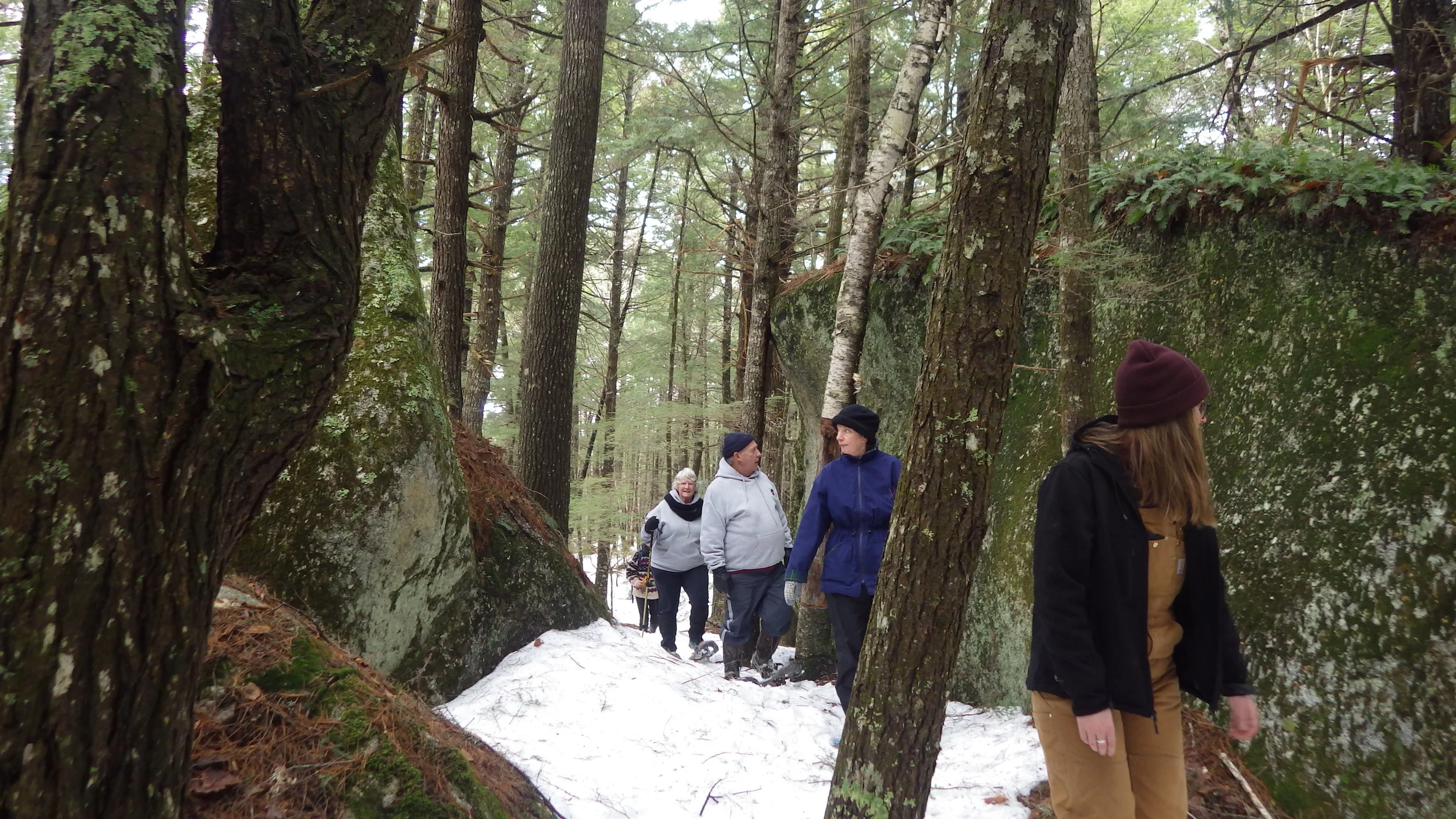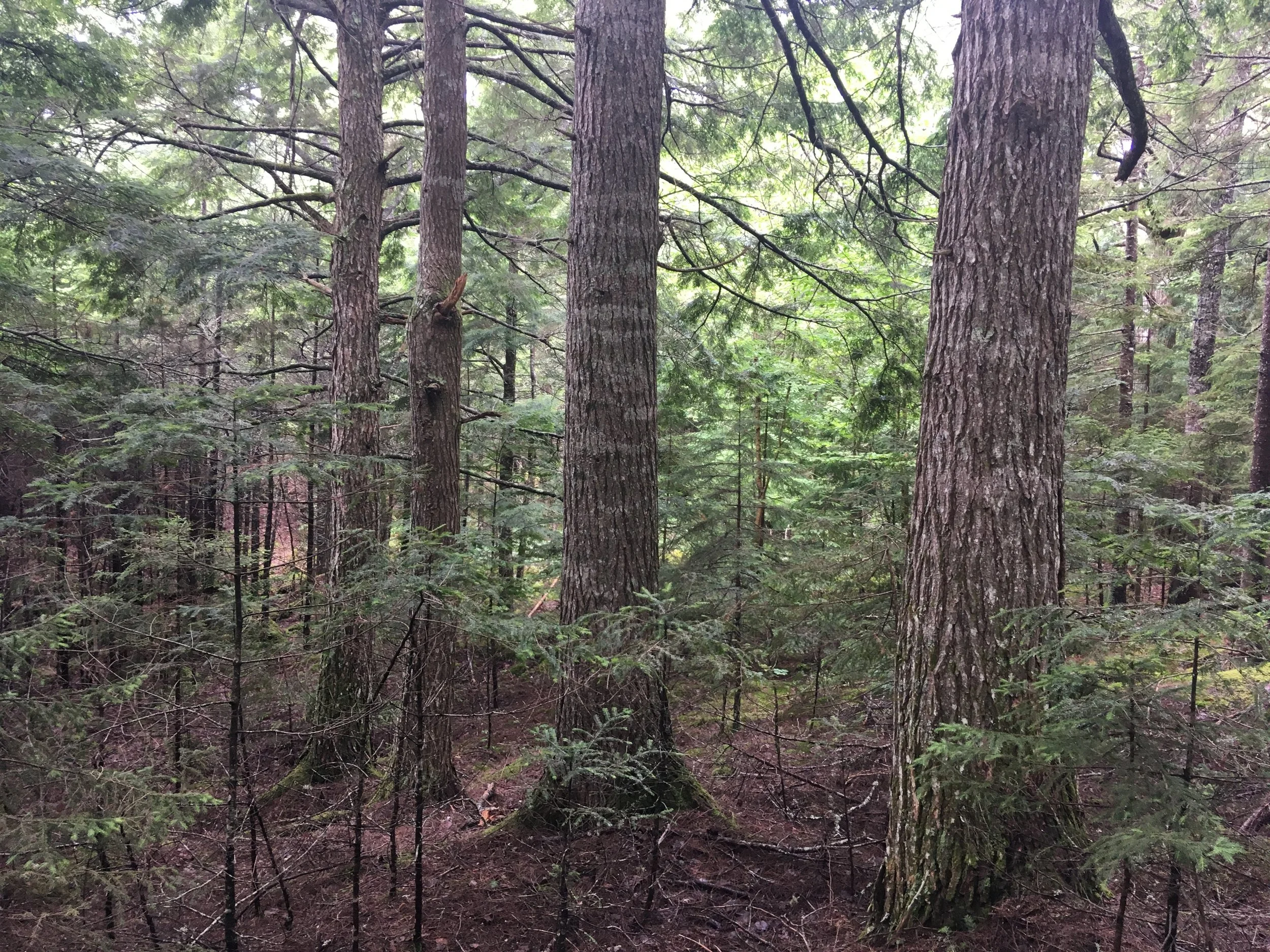
Our Forestry Activities
At the MCFC, we pride ourselves in conducting forestry activities that promote the natural conditions of the Acadian Forest.
Our management plan was developed during the pilot phase and has been under review and discussion since 2016. Although components of the plan are now out of date, we hope to have a final, approved management plan in the coming year. In the meantime, here is a summary of some of the forestry practices we do differently here at the MCFC.
If you’re interested in taking a look at our draft interim management plan you can find it here.
Management Objectives
UNEVEN-AGED MANAGEMENT
Similar to all Crown lands in Nova Scotia, our harvest and silviculture prescriptions are guided by ecosystem-based management and the objective to sustain ecological functions according to the Province’s Forest Ecosystem Classification (FEC). The MCFC implements heightened conservation and restorative values within our license area based on the most current science for species at risk. All harvesting and silviculture prescriptions promote vegetation types that are characteristic of the optimal stand structure according to the FEC or state prior to human intervention. With the use of these techniques as well as increasing the proportion of lands managed through partial harvests rather than clearcutting, the MCFC’s intention is to restore the integrity of the multi-aged, Acadian Forest landscape within the land base.
MULTIPLE VALUES
The Medway Community Forest Coop license area has been historically managed for primarily timber uses for centuries. However, the forest is still rich in timber, ecological, and social and cultural values. The MCFC is developing forest management practices to take full advantage of these attributes for the benefit of present and future generations through a management process that achieves sustainability, transparency, diversity, collaboration and informed decision making. We aim to determine the highest value use for each portion of our license area, from the perspective of social, environmental and economic values.
SPECIES AT RISK
The MCFC is home to several species at risk. Working in partnership with organizations such as the Mersey Tobeatic Research Institute (MTRI), Atlantic Canada Conservation Data Centre (ACCDC) and the Department of Lands and Forestry (DLF) we aim to ensure our harvesting operations and recreational activities are occurring with minimal damage to the wildlife habitat. There are several species at risk residing in the MCFC license area that the DLF, ACCDC and MTRI have specified as requiring special management practices. One unique practice we’re implementing is a silent season for migratory birds during spring nesting for the entire month of June.
ACADIAN FOREST RESTORATION
The aim of the MCFC is to conserve, restore and enhance the health and biodiversity of the land base. By implementing strategies to facilitate Acadian Forest restoration, the MCFC uses silviculture that is consistent with the natural variability and natural disturbance patterns appropriate to individual stands.
Specific restoration strategies include:
Pre-commercial thinning that favours a diversity of Acadian forest species (hardwood and softwood)
Planting a diversity of species in areas with minimal natural regeneration
Priority removal of species that short-lived and less likely to succeed with climate change (ie. black spruce and balsam fir)
Promotion of adaptability and resiliency in all forestry activities.
Following the Seven Mile Lake fire in 2016, we partnered with the Department of Lands and Forestry, Community Forests Canada and Forest Recovery Canada to restore two burned clear cuts.
With the generous support of our partners, we’ve been able to give this site the boost it needs to begin regrowing in areas of soil nutrient depletion.
